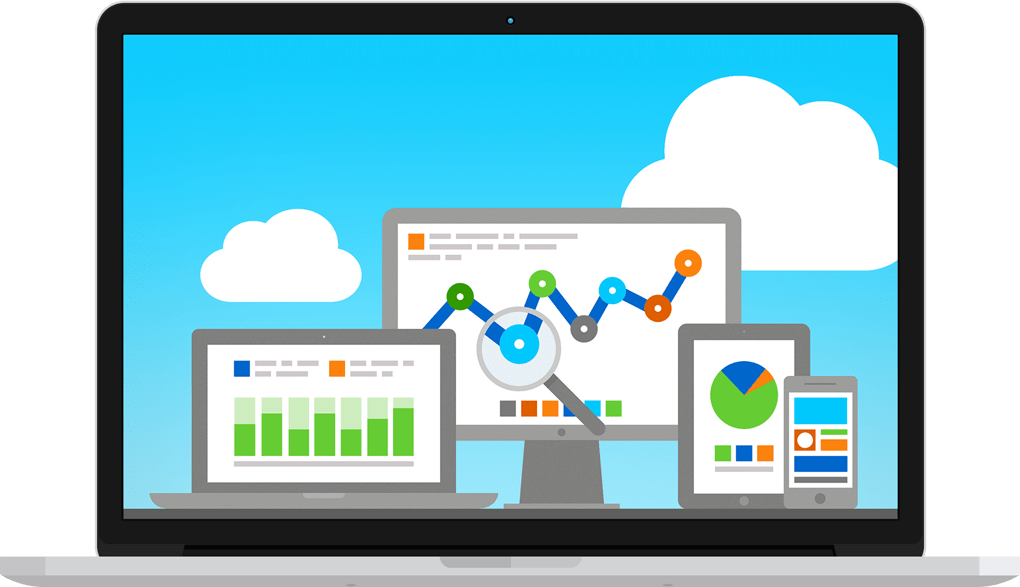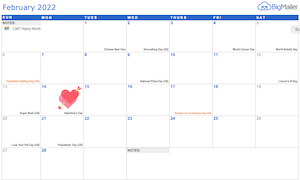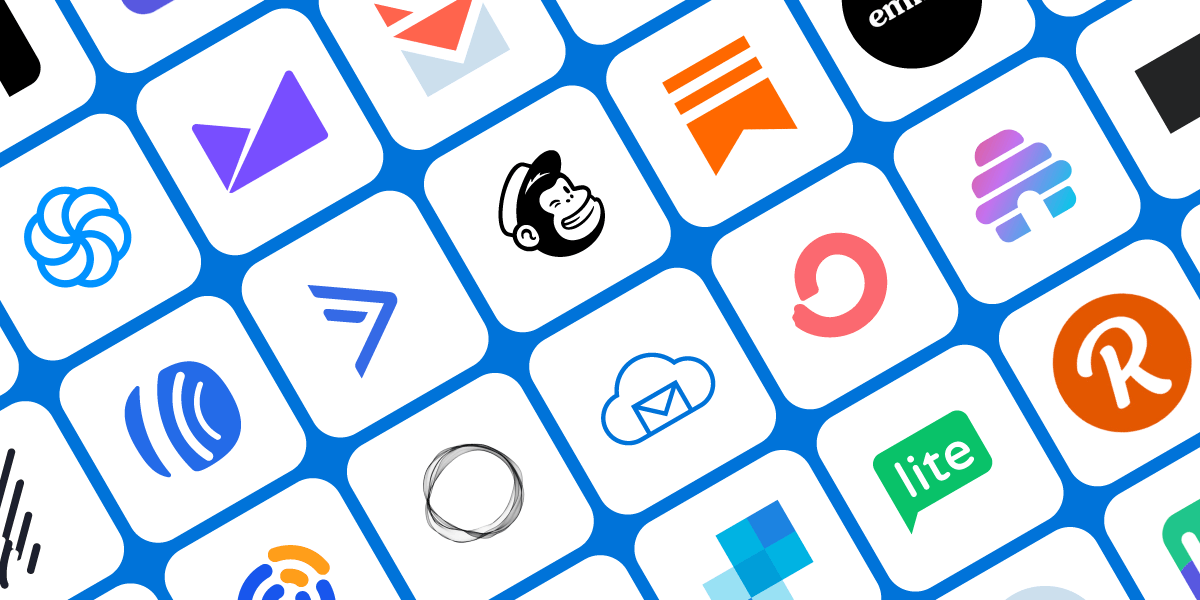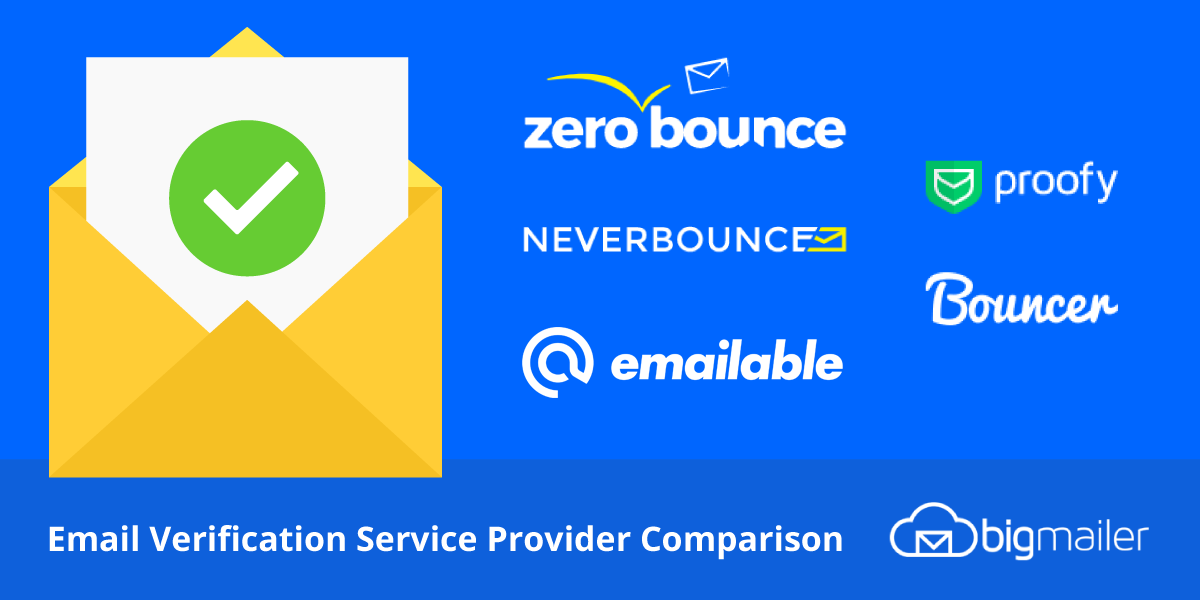Email Marketing Guide
(With Links to Free Resources – Articles, Tools, Tips)
Email marketing continues to be one of the best performing channels for marketers. While it’s not a simple discipline, mastering it can deliver exceptional ROI for your business. Follow the resources we listed below to master each area one at a time and get on a path to email inbox domination.
Note: While we briefly mention cold email outreach early on this guide is meant for marketers working with opted-in lists.
Inbound Vs. Outbound Marketing (aka Cold Outreach)
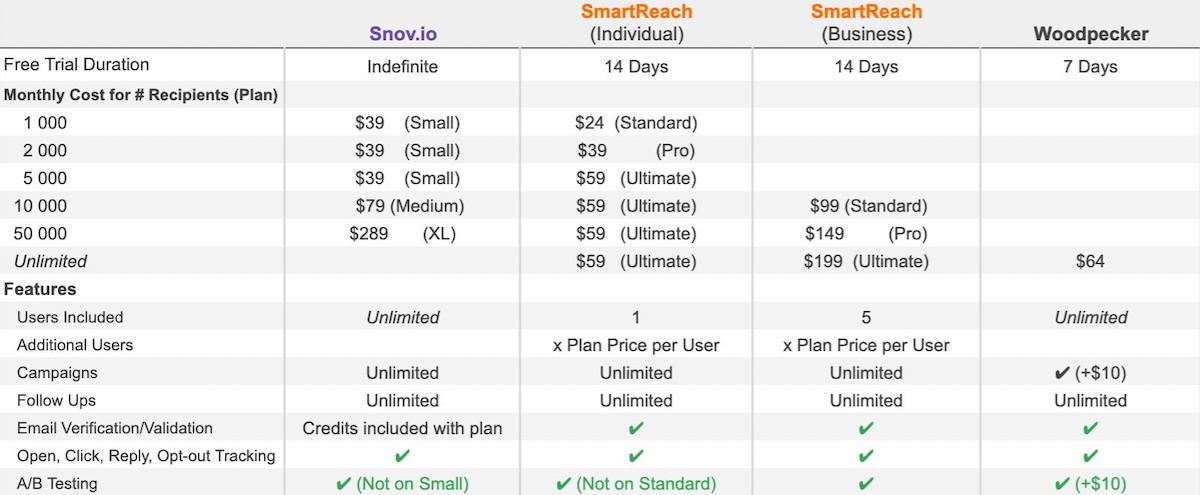 Inbound marketing focuses on creating and distributing content that leads people into your website. Marketing content can be in a variety of forms – social media posts, blog posts, reports, ebooks, webinars, etc. Outbound marketing involves reaching out to prospects to get them interested in a product.
Inbound marketing focuses on creating and distributing content that leads people into your website. Marketing content can be in a variety of forms – social media posts, blog posts, reports, ebooks, webinars, etc. Outbound marketing involves reaching out to prospects to get them interested in a product.
Most email marketing platforms don’t allow sending cold outreach emails. Sending cold emails from platforms that don’t allow can result in your account suspension. Often times marketers say “but how does a provider know I send cold emails” and the answer is simple – cold emails tend to have a higher complaint rate, while purchased lists tend to have both – high bounce and complaint rates. When a sender doesn’t have a relationship with sender the email engagement tends to be low. Many platforms have automatic detection for list quality (AI-based) or built-in quality controls for engagement.
If you plan to send cold outreach email consider providers that specialize it cold outreach. Check our comparison of cold email platforms article – all providers listed offer a tier or a trial.
If you are looking for a marketing email provider to send promotional emails check out our bulk email marketing providers comparison page.
Are Cold Emails Considered Spam?
Cold emails are unsolicited emails, but not always spam, as long as they comply with rules for sending unsolicited email. To comply with spam laws all bulk emails must include an unsubscribe link, can not have a misleading subject line or message, can not mislead on who the sender is. In some countries, a prior relationship with recipient is required. See this list of email marketing regulations by country for a detailed reference.
Why does an email land in spam? Most mailbox providers have their own algorithms for determining spam score of an email, which considers a variety of factors.
List and Sender Reputation Management
Most email marketing platforms, including BigMailer, don’t allow use of email lists that are purchased, rented, or cold emails sourced from LinkedIn/social or scraped from the web. That is because those lists almost always result in high bounce and complaint rates for most senders. It doesn’t matter how good the source (of a purchased list) is, not having a relationship with email recipient doesn’t deliver a strong engagement as opted-in lists.
High bounce rate (over 10%) may result in your account suspension and can affect your email deliverability. High complaint rate (above 0.1%) will damage your sender reputation and result in more emails going into Spam/Junk folder in the future.
All lists decay overtime for a variety of reasons, like job changes or cable provider switch. A typical monthly decay rate is 2% for B2C and 3% for B2B lists. A bounce rate of over 5% is considered not healthy. If your list hasn’t been used in more than 2 months it should be verified before it’s used again. Check out our comparison of email verification providers with discount codes for some.
Not all emails can be verified, so you will most likely have a small bounce rate even after you verify your list. The verification accuracy depends on the make up of a list (mailbox providers %) and how old it is.
Deliverability and Inbox Placement
Did you know that an email in the Spam folder is considered delivered? So when a provider claims high deliverability that just means they can deliver high volumes of emails without being blocked by mailbox providers. Understanding deliverability is just the first step to inbox domination. The hard part is to get the emails placed into inbox.
Here is a diagram of all deliverability and inbox placement factors to give you an idea:
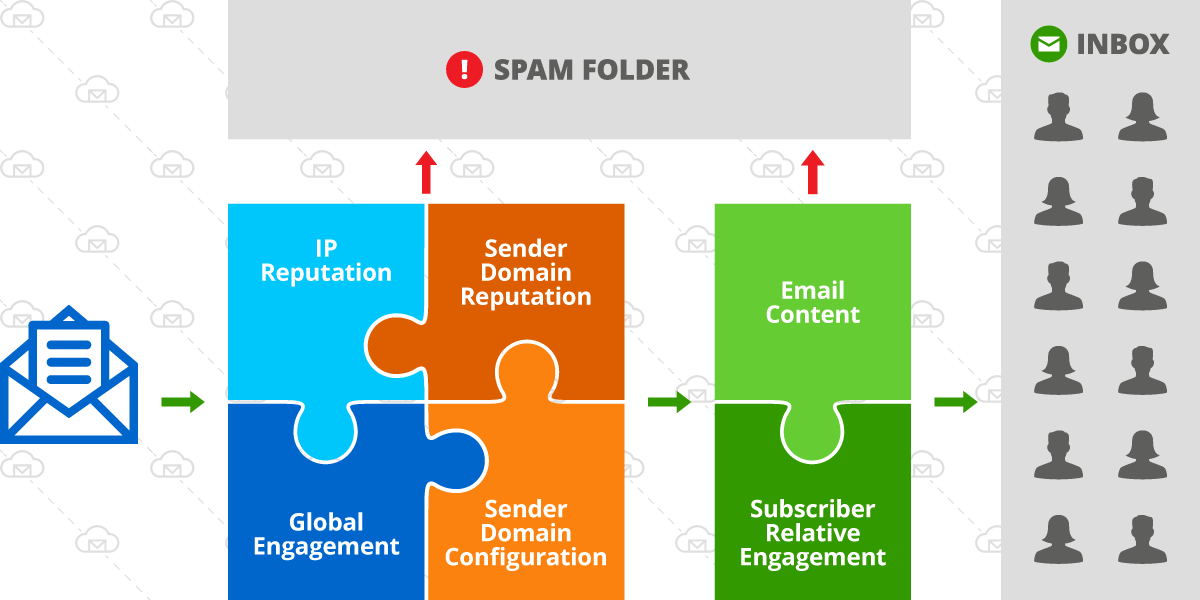
Explore the resources listed below to help you get your emails to your recipients and improve your email campaigns engagement and ROI.
- Improve Deliverability – Guide to Best Practices (BigMailer)
- Dedicated IP for Email Marketing – Do You Need it? (BigMailer)
- How to land in Gmail’s Inbox Primary Tab
- Checklist: Find and Fix Email Deliverability Issues (GlockApps)
- ReturnPath – Deliverability testing
Email Marketing Automation
There are many terms used by marketers to describe automated emails – marketing automation, auto-responders, drip emails, email sequences, and more. Automated emails are often thought of as drip sequences, but there are plenty of use cases where an automated email isn’t part of a sequence.
Email marketing automation is the ability to send emails that are triggered by time or action. Automated emails are meant to be sent at optimal timing to ensure better engagement and with most relevant information. For example, it’s common practice to send an email 1 day after a trigger event at exact time previous engagement occurred, to maximize engagement.
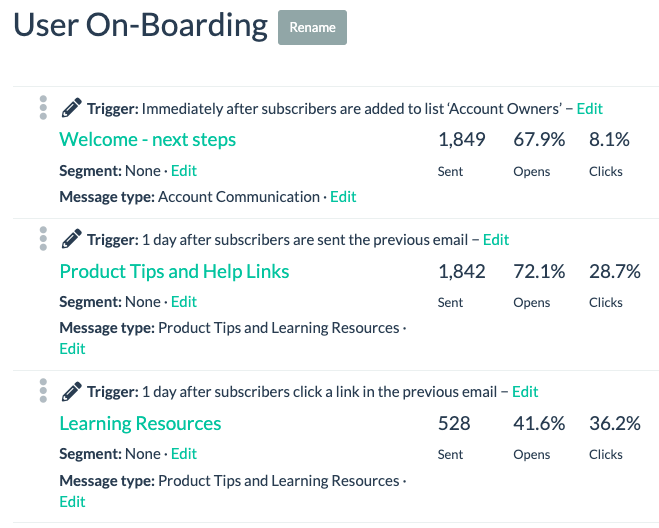
Email Marketing Automation Example in BigMailer
Email Marketing Automation Examples:
1. A single welcome email sent when a new subscriber is added to the list, perhaps with links to best content or info on how often new content will be emailed.
2. A welcome sequence sent after a signup with valuable content, matching subscriber’s interests.
3. A product or service on-boarding email sequence with tips on using a product or advice from experts.
4. An email or a sequence triggered by a customer interaction with a website or product.
5. An email triggered by an interaction outside of main website (3rd party service a platform) – purchase of a product or service, a sales person adding a contact into CRM, interaction with an advertisement, etc.
See our email marketing automation guide for more detailed examples.
Email Testing Tools
Not sure on what your sender reputation is or what may cause your emails to go into Spam folder? Use these email testing tools to evaluate your emails and get ideas on how you can improve.
- Mail-Tester.com – send an email to a test account to get a simple score and overview of issues (FREE)
- GlockApps – Spam testing tools – starts with free tier
- Litmus – Email creative test, spam testing – Plans start at $99/month
Subject Line and Templates
When it comes to subject line – short subject lines with minimal punctuation are best for inbox placement. You can add a complimentary preview text to follow your headline with more detail.
Follow these rules for optimizing your subject line:
- Keep it short – 3-4 words is best. You can continue it in the Preview field
- Avoid capitalization and excessive punctuation.
- If you can, personalize either subject line or preview field.
- Avoid using SPAM keywords (use them in preview field if you must, but avoid them in subject line).
Segmentation and Personalization
If you have some data points for your subscribers, use them to segment and personalize your email templates and campaigns.
Here are some segmentation examples:
- Location (optimize send time by time zone) – setup a campaign to send based on local time for best engagement
- New/Recent subscriber – your most recent subscribers are likely to engage with your content
- Highly engaged (opens & clicks)
- Frequent Buyer
- Never purchased
- VIP
Most platforms, BigMailer including, support liquid templating (aka merge tags), which can be used to add conditional content blocks in your template based on additional fields you have for your subscribers.
AB Testing
Most common AB tests you can run, and offer the best ROI on your efforts, are for:
- Send time
- Subject line
Many platforms support some time of campaign AB testing, with subject line being the most supported type. But if your platform does not, there are some simple ways you can simulate those if you can split/segment your list randomly based on a data point that doesn’t skew results.
The best time to send marketing emails is typically Monday through Thursday 6am-10am local time, but you should expand this window and test what works best for your audience and content. For example, your subscribers might be more likely to engage around lunch time or buy on Friday afternoon.
Performance Optimization and ROI Tracking
If you don’t measure it you can’t improve it. How optimized is your tracking and analytics setup? Follow these guides to either setup or audit your email campaign tracking.
- Email Campaign Tracking with Google Analytics utm_ parameters (BigMailer)
- Conversion tracking with Google Analytics (BigMailer)
Whatever your setup and goals, make sure you know what email channel delivers for your business.
Email Marketing Tips in Your Inbox
Only the good stuff - expert tips, best content, and no spam ever.
